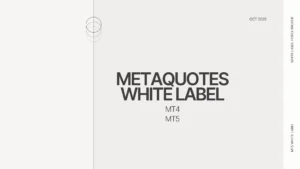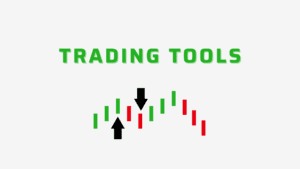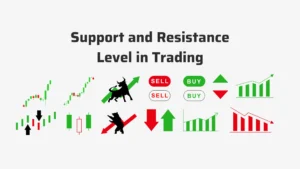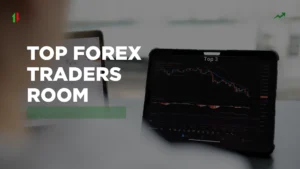In the relentless, microsecond world of modern finance, the ability to react faster than the competition is the ultimate edge. While headlines often focus on the complex derivatives and futures markets, a quiet revolution has been occurring at the very foundation of trading: the cash markets. This revolution is powered by spot algo trading, a sophisticated method that leverages advanced algorithms and high-speed technology to automate the process of buying and selling assets for immediate delivery.
For institutional investors, prop trading firms, and hedge funds, this is no longer a luxury but a necessity. But what exactly is it, how does it work, and how can you leverage its power? This comprehensive guide from LiquidityFeed.com will demystify spot algorithmic trading, exploring its mechanisms, benefits, strategies, and the critical infrastructure that makes it all possible. We will delve into how it differs from trading CFDs, futures or options, and why its prominence is soaring, especially in volatile markets like cryptocurrencies.
Key Takeaways for Traders & Institutions:
- Automated Edge: Spot algo trading provides speed and efficiency, consistency and discipline, and emotion-free decisions that are impossible to maintain manually.
- Technology is Core: Success hinges on a robust spot algorithmic trading platform, powerful API infrastructure, and access to real-time market feeds.
- Strategic Implementation: Effective algorithmic trading strategies combined with rigorous risk management and continuous monitoring and optimisation are key to profitability.
Deconstructing the Basics: What is Spot Trading?
Before we can understand the algorithmic component, we must first grasp the core concept of the underlying asset market.
What is Spot Trading?
Spot trading refers to the purchase or sale of a financial instrument, commodity, or currency for immediate delivery and payment. The “spot” price is the current market price at which an asset can be bought or sold for immediate settlement. This is in direct contrast to derivatives like futures or options, where contracts are agreed upon today for a transaction that will occur at a future date.
Key Characteristics of a Spot Trade:
- Immediate Delivery: The central tenet. The asset and cash are exchanged promptly.
- Settlement Cycle: While “immediate” in contract, formal settlement often follows a standard cycle. In traditional equity markets, this is typically the T+2 cycle (Trade Date plus two days), managed by a clearing house. In crypto markets, settlement is often instantaneous.
- Cash Markets: Spot markets are often synonymously called cash markets because they involve the direct exchange of cash for the asset.
- Over-the-Counter Trading: Many spot markets, particularly in forex and crypto, operate as over-the-counter trading venues. This means trades occur directly between parties, often facilitated by a liquidity provider, rather than on a centralized exchange. Understanding liquidity pools is essential in this context.
The Bottom Line: So, what does spot mean in trading? In essence, it means “right now.” You pay the current price and receive the asset (or its title) immediately, becoming the direct owner.
The Fusion of Power: What is Spot Algorithmic Trading?
Now, let’s introduce the engine: the algorithm.
What is Spot Algorithmic Trading?
Spot algorithmic trading is the use of computer programs and advanced algorithms to automatically execute orders in the spot market. These algorithms are pre-programmed with a set of rules and instructions based on trading signals, timing, price, quantity, or any mathematical model. The goal is to automate the process of buying and selling with speed and efficiency that is impossible for a human trader.
How Does Spot Algorithmic Trading Work?
The spot algorithmic trading process is a sophisticated, multi-layered operation. Here’s a breakdown:
1. Strategy Formulation
A trader or quant developer defines a spot algorithmic trading strategy. This could be based on technical analysis (e.g., moving averages), statistical arbitrage, or market microstructure. Many successful strategies are detailed in our guide to top trading strategies for success.
2. Algorithm Development
The strategy is coded into a trading algorithm using algorithmic trading software. This code dictates the precise conditions for order entry and exit.
3. Data Ingestion
The algorithm connects to real-time market feeds, consuming vast amounts of data. This includes price movements, trading volumes, order books, and broader market sentiment indicators.
4. Signal Generation
The algorithm continuously analyses the incoming data against its pre-set rules. When all conditions align, it generates a trading signal.
5. Order Execution
The signal triggers an order, which is routed through the platform’s API infrastructure to the exchange or brokerage platform for fast execution. This entire process, from signal to routed order, can occur in milliseconds. For those interested in the technical side, we explore REST API and integration methods in detail.
6. Risk Management & Monitoring
Throughout the process, embedded risk management protocols, such as stop-loss orders and position size limits, are active. The system also provides instant analytics for continuous monitoring and optimisation.
Spot Trade vs. Contract for Difference (CFD) and Other Derivatives
A critical distinction for any trader is understanding the instrument they are dealing with. Let’s compare spot trade vs contract for difference.
| Feature | Spot Trading | Contract for Difference (CFD) |
|---|---|---|
| Asset Ownership | You own the underlying asset. | You do not own the asset; you have a contract with the broker on the price movement. |
| Settlement | Immediate delivery and settlement (e.g., T+2 cycle). | Cash-settled; the difference between the entry and exit price is paid. |
| Market Exposure | Direct exposure to the asset’s price. | Synthetic exposure to the asset’s price. |
| Fees & Costs | Typically involves exchange fees and spreads. | Often involves spreads, overnight financing fees, and other commissions. |
| Use Case | Long-term investing, direct ownership, algorithmic spot trading for arbitrage and market-making. | Short-term speculation, hedging, leverage without owning the asset. |
Pro Tip: This distinction is especially prominent in the crypto derivatives vs spot debate. Spot crypto trading involves buying actual Bitcoin or Ethereum, while crypto derivatives like CFDs or perpetual swaps are bets on the price without taking custody of the coin. Learn more about understanding derivatives and how to trade them.
Why Algorithmic Trading is Dominating the Spot Markets
The migration to algorithmic spot trading is driven by a suite of undeniable advantages that address fundamental human and market limitations.
Speed and Efficiency: The HFT Advantage
This is the most cited benefit. Algorithms can process real-time market feeds and execute orders in microseconds. This is the domain of HFT trading (high-frequency trading), a subset of algo-trading that uses powerful computers to transact a large number of orders at incredible speeds. This speed is crucial for exploiting small, short-term price movements and minimizing price slippage. Understanding slippage and its effects is key here.
Consistency and Discipline: The Emotion-Free Shield
Human traders are susceptible to fear, greed, and fatigue. Algorithmic trading software operates with machine-like consistency and discipline. It will execute the strategy exactly as programmed, making emotion-free decisions even in the most volatile markets. It will not hesitate to execute a stop-loss order during a crash or a take-profit order during a rally.
Enhanced Risk Management
Sophisticated risk management is baked directly into the code. Algorithms can manage multiple stop-loss orders, position sizing, and exposure limits across dozens of trades simultaneously, far beyond the cognitive capacity of a single trader.
Backtesting and Scalability
Before ever risking real capital, a spot algorithmic trading strategy can be rigorously backtested on historical data. This allows for continuous monitoring and optimisation of the strategy. Furthermore, once a profitable strategy is found, it can be easily scalability to trade larger volumes or across multiple assets without a linear increase in effort.
A Deep Dive into Common Spot Algorithmic Trading Strategies
The “brain” of the operation is the strategy. Here are some of the most prevalent algorithmic trading strategies used in spot markets.
Market Making
This strategy involves simultaneously quoting both a buy (bid) and a sell (ask) price for an asset to profit from the bid-ask spread. Algorithmic spot trading is perfect for this, as it requires constant adjustment of quotes based on the order books and market conditions. The role of liquidity providers vs market makers is crucial to understand here.
Statistical Arbitrage
This strategy uses statistical models to identify temporary pricing inefficiencies between correlated assets. The algorithm automatically buys the undervalued asset and sells the overvalued one, profiting when the “spread” between them converges to its historical mean.
Trend Following
A classic strategy where algorithms are designed to identify and ride market trends. Using indicators like moving averages, they enter long positions in uptrends and short positions (where permissible) in downtrends.
Mean Reversion
This strategy operates on the assumption that prices and trading volumes will revert to their historical average over time. Algorithms identify assets that have deviated significantly from their mean and place trades expecting a reversal.
The Engine Room: Choosing a Spot Algorithmic Trading Platform
The practical implementation of these strategies hinges on the spot algo trading platform you choose. A spot algorithmic trading platform is the integrated environment that provides the tools, API infrastructure, and market access needed to deploy your algorithms.
Key Features of a Top-Tier Algo Trading Platform:
Robust API Infrastructure
The backbone of any algo trading platform. A well-documented, low-latency API allows your custom software to interact seamlessly with the exchange for data and order execution.
Access to Real-Time Market Feeds
The quality of your decisions depends on the quality of your data. Real-time market feeds for price movements, depth of order books, and trading volumes are non-negotiable.
Fast Execution & High Liquidity
A platform connected to deep pools of liquidity ensures fast execution with minimal price slippage. This is often achieved through partnerships with multiple liquidity providers. Discover the top liquidity providers in forex and crypto.
Comprehensive Tools and Instant Analytics
The platform should offer built-in tools for strategy development, backtesting, and provide instant analytics on performance, enabling continuous monitoring and optimisation.
For the Indian Market: For those looking at the Indian market, researching the best algo trading softwares in India should focus on these core features, along with specific compliance with local regulations like SEBI.
The Institutional Backbone: Brokerage, Liquidity, and Infrastructure
The ecosystem supporting spot algo trading is extensive and critical for its operation, particularly for professional entities.
Brokerage Setup and Platforms
A reliable brokerage platform is the gateway to the markets. For algo-traders, this means choosing a broker that offers a robust, stable, and low-latency trading API. The brokerage setup must be capable of handling the high order volume typical of algorithmic strategies. Those considering starting a proprietary trading firm should pay particular attention to this.
The Role of the Liquidity Provider
A liquidity provider (LP) is a financial institution or a large bank that commits to buying and selling assets to ensure a market has high liquidity and tight spreads. For a spot algo trading platform, connecting to multiple LPs is essential to guarantee fast execution for its clients. The collaboration between brokers and liquidity providers is fundamental to market functioning.
White Label Solutions
Many businesses, including new brokerage platforms or prop trading firms, opt for White Label solutions. This allows them to rebrand an existing, proven spot algorithmic trading software and infrastructure under their own name, significantly reducing development time and cost. Explore forex turnkey solutions for more information.
Navigating the Challenges and The Path Forward
While powerful, spot algorithmic trading is not without its challenges. The initial setup cost for technology and data can be high. There is a constant technological arms race, and strategies can become obsolete as market conditions change. Furthermore, the complexity of the systems introduces model risk—the risk that the algorithm itself is flawed.
However, the trajectory is clear. As technology becomes more accessible and data becomes richer, the adoption of algorithmic spot trading will continue to trickle down from large hedge funds and institutional investors to sophisticated retail traders. The fusion of AI and machine learning with traditional quantitative strategies promises a new era of adaptive, self-optimizing trading systems. The impact of AI on forex trading is already becoming apparent.
Conclusion: Automating Your Edge in the Spot Market
Spot algo trading represents the pinnacle of modern financial technology. It transforms the foundational act of spot trading—buying and selling for immediate delivery—into a disciplined, efficient, and scalable process. By leveraging algorithmic trading software, traders can achieve speed and efficiency, enforce consistency and discipline, and implement sophisticated risk management in a way that is simply superhuman.
Whether you are an individual trader looking to automate your trades successfully or an institution building a next-generation brokerage platform, understanding and harnessing the power of spot algorithmic trading is no longer optional. It is the definitive path to gaining a sustainable competitive advantage in today’s hyper-competitive, real-time markets.
Ready to Explore the World of Automated Trading?
Stay connected with LiquidityFeed.com for more deep dives into market microstructure, trading technology, and liquidity solutions.
Explore More Resources